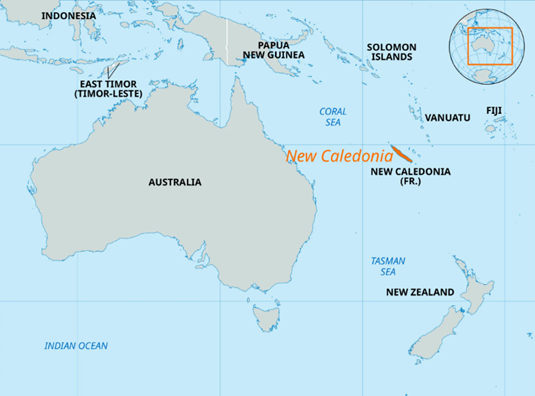The President of India has nominated four new members to the Rajya Sabha.
About Nominated Members of Rajya Sabha
- Constitutional Provision:
- According to Article 80, the Rajya Sabha shall comprise up to 238 elected members and 12 nominated members.
- Under Article 80(3), the President nominates 12 people with special knowledge or experience in literature, science, art, or social service.
- Role of Ministry: Under the Allocation of Business Rules, 1961, nominations to the Rajya Sabha are handled by the Ministry of Home Affairs (MHA)
- MHA notifies the appointments after the President nominates them.
- Court Case: In 2012, the Delhi High Court upheld Sachin Tendulkar's nomination under Article 80(3) in the case of Ram Gopal Singh Sisodia vs. Union of India.
India is set to launch its first weather derivatives, with National Commodity and Derivatives Exchange Ltd (NCDEX) partnering with India Meteorological Department (IMD) to develop rainfall-based derivative products.
- These instruments will help farmers and allied sectors hedge against risks like irregular rainfall, heatwaves, and unseasonal weather.
- Using historical and real-time weather data from IMD, these derivatives will offer location-specific, seasonal contracts backed by statistically verified datasets.
About weather derivatives
- Unlike traditional derivatives based on financial assets, weather derivatives utilise meteorological parameters, such as rainfall and temperature, as the underlying asset, tied to a predefined weather index.
- Since these have no inherent market value, weather derivatives are considered part of an incomplete market.
- Globally, over-the-counter trading in such products began in 1990s, and India now takes its first significant step forward.
Article Sources
1 sourceAstronomers using data from NASA’s Transiting Exoplanet Survey Satellite (TESS) have found a new super-Earth named TOI-1846.
- This exoplanet is about twice the size of Earth and orbits a red dwarf star 154 light-years away that may be rich in water.
About Super Earth
- Exoplanets: Super-Earths are a type of exoplanet (planets outside our solar system). The name refers only to their size and mass, not to Earth-like features.
- Size & Mass: They are larger than Earth (up to twice its size) and more massive (up to 10 times Earth’s mass), but lighter than Neptune.
- Uncertain Nature: These planets are unlike any in our solar system, and their true composition is still unclear.
- Also Known As: The larger ones are sometimes called sub-Neptunes or mini-Neptunes.
Indian fertiliser companies have signed an agreement with Saudi Arabian for supply of 3.1 million MT of DAP fertiliser per annum for five years.
About Diammonium phosphate (DAP)
- It is made of two common macronutrients: Phosphorus and Nitrogen and plays a vital role in the development of new plant tissues and the regulation of protein synthesis in crops.
- DAP is the world’s most widely used phosphorus fertilizer as It’s highly soluble and thus dissolves quickly in soil.
- India is the largest agricultural consumer of DAP in the world.
- Under NBS, fixed yearly subsidy is given on P&K fertilizers like DAP based on nutrient content.
- DAP has additional uses: Such as fire retardant, for metal finishing etc.
India in grip of silent salt consumption epidemic say ICMR’s National Institute of Epidemiology.
Salt Consumption
- Studies show that urban Indians consume around 9.2 grams/day while rural Indians consume around 5.6 grams/day - both higher than WHO recommendation of less than 5 grams of salt per person per day.
- Excessive salt consumption is fuelling a silent epidemic in India with people at increased risk of hypertension, stroke, heart disease, and kidney disorders.
- One promising solution is use of low-sodium salt substitutes - blends in which part of the sodium chloride is replaced with potassium or magnesium.
- Initiatives: “Community-Led Salt Reduction” by ICMR, social media campaign using the hashtag #PinchForAChange.

France announces an agreement to give New Caledonia more autonomy.
The agreement would create the “State of New Caledonia” within the French Republic, that would give the semiautonomous Pacific territory more freedoms but stops short of granting it independence.
New Caledonia
- Location: French overseas territory in the Pacific Ocean.
- History: During the 1840s, Islanders were kidnapped by European traders as slaves or for forced labour in sugarcane plantations, later in 1853 annexed by France.
- Present Demand: Deep divisions between its indigenous Kanak population and Europeans, over its independence.
The Union minister of Agriculture asked CMs to immediately stop forced sale of nano-fertilisers and biostimulants to farmers.
About Nano-fertilisers and Biostimulants
- Nano fertilizers are nutrients that are encapsulated or coated within nanomaterial measuring 100 nanometres or less.
- Use of nanoparticles helps to control the release of nutrients, making them efficient.
- Biostimulants: Substances and/or microorganisms whose function when applied to plants or the rhizosphere is to stimulate natural processes to benefit crop quality, independently of its nutrient content.”
- Popular Biostimulants: humic acids, seaweed extracts, liquid manure composting and beneficial bacteria and fungi.




